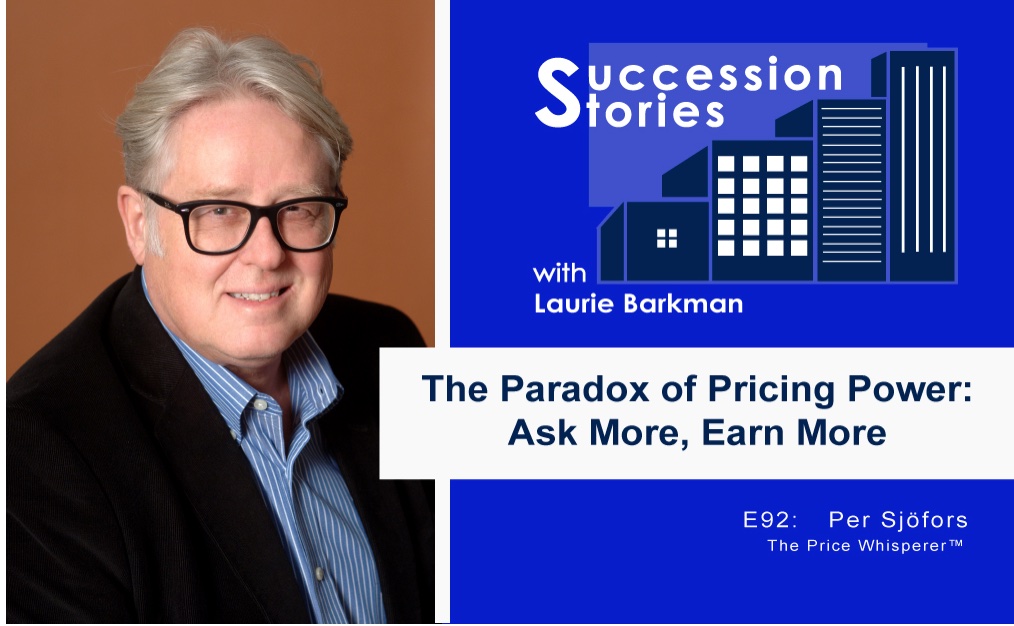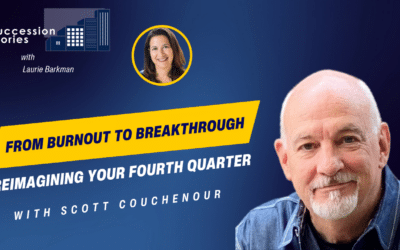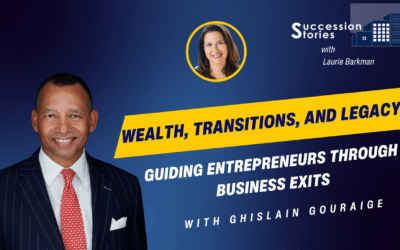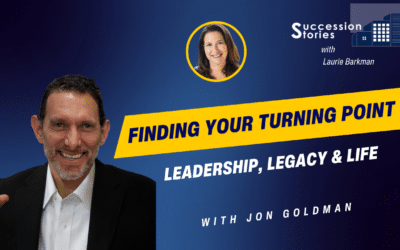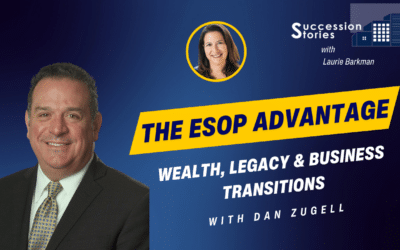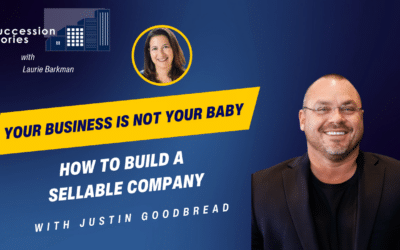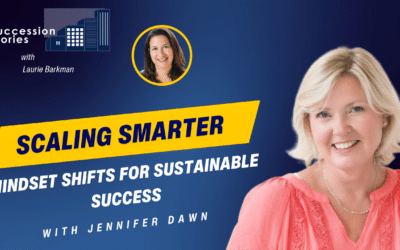How you set your pricing strategy affects your profitability, ability to break even, and your chance at success. Per Sjöfors is the author of The Price Whisperer and CEO of Sjöfors & Partners. Per has made it his life’s work to make pricing practical and actionable, and has helped over 600 clients substantially increase sales and profits. He joins host Laurie Barkman to discuss his firm’s methodology of buyer psychology, market research, and machine learning, and how this ties into pricing, affecting sales volume, customer segmentation, profitability, and company valuation.
Listen in to learn more about:
- Why competitive based pricing may not always be the best strategy
- Value based pricing based on the value customers accrue and are willing to pay for
- Factoring practical behavioral economics into pricing
- Ensuring your products/services are priced to attract high value customers
- How slight price adjustments can improve profitability exponentially
- The relation between value perception and price
Show Links:
About Succession Stories Podcast
Succession Stories is hosted by Laurie Barkman, the Business Transition Sherpa– guiding business owners through the process from “transition to transaction.”
Learn more at https://thebusinesstransitionsherpa.com
Book a 1:1 Advisory call at:
We appreciate your support…subscribe, share, and post a review to share what you like about the show!
Don’t leave your exit to chance.
Stony Hill Advisors works with owners like you to get ready and maximize value when you’re ready to sell.
Visit www.stonyhilladvisors.com/podcast for a complimentary business valuation.
Transcript
Laurie Barkman:
Welcome to Succession Stories! I’m Laurie Barkman. As an exit value planning and M&A advisor, I call myself The Business Transition Sherpa. This podcast guides entrepreneurs from transition to transaction- from building value in your business to letting go.
What do I do when I’m not hosting a podcast? I work with owners to maximize business value with my firm, SmallDotBig. And as a Certified Mergers and Acquisitions Advisor with Stony Hill, I guide you through the complex process of selling your company.
Tune-in to Succession Stories for weekly insights to reward your hard work and avoid succession regrets. Hit subscribe wherever you listen to podcasts, and sign-up for our newsletter at successionstories.com. Here’s to your success!
Is this the year to sell your company? Don’t leave your exit to chance. Stony Hill Advisors works with entrepreneurs like you to get ready for what may be the biggest transaction of your life. Learn what your business is worth by visiting stonyhilladvisors.com/podcast.
Laurie Barkman:
Per, it is hard to believe that more than 20 years ago, you and I worked together at a small asset management company here in Pittsburgh called Media Site, and that’s how we met. Amazing.
Per Sjofors:
Yeah, it’s been a long time and I’m very pleased to be on the show and very pleased to meet you again.
Laurie Barkman:
Yeah, and thanks for reaching out. That’s what I love about LinkedIn and social media, you reached out and you said, “Laurie, I think we should reconnect. I think I can add a lot of value for your guests or for your audience on the show as a guest,” and we talked and I completely agree, you have an amazing experience and global resume as a CEO, business development leader, and someone who has probably seen it all when it comes to sales forces and what makes teams tick. The focus of today’s conversation is about pricing. You call yourself the “Price Whisperer.” Why is that?
Per Sjofors:
Well, it’s a moniker that I didn’t invent, actually. What happened was that people started to call me the Price Whisperer, and when I had heard that 50 or 100 times or something like that, I said, “Well, maybe I should just adopt it,” and I did if nothing else, because I got such a wacky name, being natively Swedish, at least people can find me through just by Googling the Price Whisperer. It’s something that makes more sense for an American audience and even though we work globally, most of our clients are here in the States.
Laurie Barkman:
You’re the third whisperer I know of. There’s the horse whisperer, there’s the baby whisperer, and you’re the price whisperer, so that means you’re helping people, you’re helping teams be more effective with their strategies. As a quick research, I went into Google just for fun, and I put in the following query: why is B2B pricing difficult? That’s what I typed in. Any guesses as to how many Google search results came back?
Per Sjofors:
Oh, no, I actually have no idea. [Laughs]
Laurie Barkman:
[Laughs] It is 29.7 million search results. Then I typed in, why is B2C pricing difficult and I got 4.4. I don’t know if that’s scientific or not but it seems like, in that math, B2B pricing is nearly seven times more difficult than B2C. Now, I assume given your experience, you spend a lot of time with B2B companies talking about pricing, but you probably also work with B2C also, correct?
Per Sjofors:
Yeah, I do, but it’s about half and half, to be honest. I think I know the answer to why people say that b2b pricing is so much more difficult and one of the most common mistakes people do in business is to set prices on a competitor. They look up the price of a competitor, and then they say, “We’re a little bit better, so let me guess that we could take another 10% higher price,” or, “Our competitor is a little bit better than me or better than us, I should say and by the way we’re new in the market, so let us price 10% lower,” and that fluff factor of 10% is purely gut feel.
Now, this is relatively easy to do in b2c because if nothing else, you can look it up on the web, or you can go to the store, if nothing else, and see what your competitors are charging for their butter flavor when you come up with a new butter flavor. In b2b, that’s a lot harder, and I’ll tell you the story of why I really got into this. I was involved with a data storage company and we made these massively scalable data storage systems. I was the CMO and the pricing was not on my table. It was the strategy officer and CEO who did that and what they tried to do was to obtain the price list of a competitor. The best you can always get was maybe there was a friendly customer who gave you the last year’s price list or I know at one point we got an international price list or the GSA schedule and then these two guys said, “Okay, we’re a little bit better.”
You start with information that is completely irrelevant, because it’s old, and it’s incomplete and it doesn’t include what discounts competitors are making, what deals they’re making, what bundles they’re making, and so forth, so it’s just a number that is irrelevant. Then on top of that, the data platform that was completely useless, they added the fluff factor, and they said, “We’re a little bit better, we have a little higher data transfer capacity so, because of that, we’ve got to be a little bit higher,” and then, of course, they sent out the salespeople and said, “Take any deal at any price.” The company eventually…and I said, “This is so sick. There must be a better way,” and long story short, there was 62 million of investor capital in the company, and investors got 9 million back when they sold the asset in bankruptcy.
Laurie Barkman:
That’s a heck of a story and it really does demonstrate how competitive based pricing does not always work. It didn’t really reflect the value that your company was providing. That’s what motivated you to take a different approach?
Per Sjofors:
I ran two companies in Europe and when I moved here to the States in the early, actually, mid 1990s, 94, I joined a company, a fairly large company established a new division for the company, and grew that. Then after that event, I ran another four companies here, and had some other students like you when we met where I was. I think I was VP of Business and in all these companies I ran, we did experiments with pricing. Some of those experiments were very successful. Next quarter revenues were up 25%. Others were complete disasters, and many of them were just inconclusive and what I learned about pricing in business school was so academic and so theoretical, that it was completely useless. It didn’t help us at all to understand why some of those experiments work. After that story, or instance, maybe with the storage company, I decided that at that point, I was too old and too opinionated to be a hired gun anymore so I started my own thing and developed the process that really makes every pricing experiment a success and you said value based pricing, yes, but it’d be nice to be value based pricing where you actually know what your customers are willing to pay for the value you deliver.
Laurie Barkman:
How do you go about that? This is not an easy thing, because especially in an environment where testing is tricky, if you have long standing relationships, it depends on the nature of the business, I would think, how do you set up tests and how do you understand the dynamics of how to go about a value based pricing experiment?
Per Sjofors:
Well, testing is something that you should avoid too and that is because especially in b2b, you want to have reccurring customers and if they see prices that are changing every time they go and buy something, you just create confusion. There’s one thing that a confused customer is not going to do and that is to buy from you and so testing is not the way and the process that I developed is, we’re using my company, is all about using a very different kind of online market research from which we can accurately measure the specific value that a marketplace receives with a product or a service.
Laurie Barkman:
Can you share an example?
Per Sjofors:
Oh, we’re talking about b2b and one example is a customer here in the Los Angeles area where we discovered that they were so underpriced. They have a business phone system in the cloud and we discovered they were assigned a price that they could quadruple their prices, and two things happened as a result. Well, first of all, it took them about nine months so they didn’t do it overnight, but two things happened after they quadrupled their prices, first of all, their sales volume went up with 25%, and then using the term that the the CEO, the very technical term, the CEO mentioned, he said, “We got rid of the bottom feeders so now we have a more professional level of customers, and our customer support costs have gone down 80%.”
Laurie Barkman:
What were some of the main justifications to move the price up four times?
Per Sjofors:
Well, it has to do with pricing itself being the strongest marketing message of benefit and value and if you underprice yourself, it sends a message of inferior quality, inferior benefit. We’ve all been there, we hold something in our hand, and we say, “I kind of want this, but this is so cheap, that it can’t be any good,” and then we don’t buy it. That’s what happened with this particular company, but the other lesson to learn here is that pricing also selects the customer. If you’re very low priced, you are only getting customers that are price sensitive and price sensitive customers care only about one thing, and that’s your low price. They don’t care much about the product, or the service that you’re selling and because of that, they don’t really bother to learn it properly, which is what this company experienced. That’s why as soon as there was a question, they just called their customer support, and got help from customer support, as opposed to really understanding how to use this particular product. Then, of course, we all want returning customers, but as a price sensitive customer, as soon as there is an alternative that’s a little bit cheaper, they’re gone, so they’re never loyal to you, and because of that, if you really look at it, in almost every market, the market leader is the high priced high value choice, not the low price alternatives.
Laurie Barkman:
There’s really a psychology to this, if I go back to my psychology, one on one class and different experiments with people’s motivations and how they think, as an entrepreneur, we might think about pricing differently. It’s probably like you said earlier about the competitive pricing, perhaps that’s the most common, and it feels a little bit scary to move, we all want to be in that top right box. We don’t want to be in that upper right quadrant, high value, high price. Well, what would have happened to that data storage business, though, if they increased their price, and their volume went down? Were they prepared for that alternative scenario? Obviously, it didn’t happen, but what were the contingency plans?
Per Sjofors:
Most companies only look at sales volume. If you look at it from any company’s point of view, profitability comes from only three variables; it’s the cost, total cost of what you sell, and the operation, it is the sales volume of whatever you sell, and it is the the the the price of whatever you sell. If you look at all of these three, and that you can do a simple thought experiment, if you change one of these three 1%, how does that impact profitability of a company? Well, if you can increase your sales volume by 1% for the average company, your profitability goes up by three and a half percent. If you can reduce your cost by 1%. For the average company, profitability goes up with five and a half percent, but if you can increase your price by 1% or decrease your discounting with 1%, profitability goes up with 11.3% for the average company.
Now, I have something that I talk about in my presentations and so forth, that I call the 1% challenge and the challenge is very simple. It is, have you ever failed to change something 1% ever? Have you ever told your salespeople, “Nope, you cannot discount this much, you have to discount 5% less.” Suddenly, for the average company, you have increased your profit by 50%. Think about that. I mean, this is leverage and we also talk about psychology, and there is actually an academic field that talks about the psychology behind our purchase behavior, and it’s called behavioral economics. The interesting thing, though, is that I set up this process that we had, that we still follow, and so forth and only about five years ago, I got wind of this behavioral economics so I was doing the practical implementation of behavioral economics for 10 years before I even knew it existed, which is kind of funny.
Laurie Barkman:
The academic side of it, as you said earlier, is just like that, right, it doesn’t feel practical, it sometimes feels convoluted and complicated and a lot of business owners, they’ve learned on the job, maybe they’ve built their business, maybe they’re an HVAC company, and they a have business, a b2b side to what they do plus they have residential. Does your process work for those types of companies? Call it more service businesses? Or is it more perfected for products?
Per Sjofors:
It doesn’t matter, it works. It’s all about buying behavior and whether you buy a service or whether you buy a product, whether you buy it for your company, or whether you buy it for yourself, purchase behavior is the same. It all starts with emotions, all purchases are made emotionally and then once we made our emotion decision, we put rationale around it, for ourselves and for others, because we believe that we’re going to be rational animals, and we’re not, and a lot of what this behavioral economics is talking about is how that lack of rationale actually happened. In fact, behavioral economics, the first theory that really was developed by a guy called Simon and he got the Nobel Prize, I think, in think it was 78, or something like that but the first thing I mean, it was in b2b, and specifically how the price is a message of value. Later on, there’s been oodles of experiments in this. For example, they found that a five cent aspirin is not particularly effective in curing your headache, whereas a 50% aspirin is, you know, so that perception of value, perceptional benefit, is closely related to the price.
Laurie Barkman:
Yeah, I want to just bring this back to why I thought it was important to have you on the show. A lot of times, the discourse and discussions in these episodes is about how can owners create a more sellable, transferable business? How do they create value, and pricing, as you just mentioned earlier, with the numbers you shared, is probably the number one lever and if we can create a competitive differentiation, if we own our niche, whatever makes our company special and different, ultimately, we should be able to charge a premium price.
If a company is listening, an owner is listening and they’re thinking about this for their products or services and are interested in learning more, it feels a little bit like a black box right now, because I know you have an artificial intelligence platform, you’re doing predictive analytics, that inherently sounds complicated. How do we unpack it a little bit to help people understand what is the process? What does it look like if you’re working in either consulting or with your software in solutions to help them determine a pricing strategy?
Per Sjofors:
Well, first off, let’s talk about value and valuation and typical results when you you start doing value pricing the right way, is a doubling of sales growth 25 to 40% higher margins and because this happens in a hockey stick kind of way, you will enjoy roughly three to five times higher valuation, which of course makes a huge difference for any company, and especially when you look at company ownership because most owners eventually want to exit and in some way, either by an IPO or selling the company, so that by itself make make a huge difference. Now, when it comes to the actual process, it’s really very simple because everything that we do happens in the background and what we do with our clients is that we, and I said that our process is, it’s online market research, but is market research, incredibly different, and not to be compared to what you get from a market research company, because they don’t do what we do.
A market research company may tell you what people want, we tell our clients what people want to pay for what they want to buy, which is very different from what you want. Yeah, I want the Ferrari, I’m not gonna buy a Ferrari, so it’s what you want to pay for that is important and so we create a research design, we do our research in the marketplace, we feed that data into our AI platform that we developed, and out spits lots of charts, really demand curves that are again, very different than what you would see in business school, but then I have serious, experienced business people that look at these theoretical curves and make total business sense. We end up telling our customers, “This is the customer profile that you should focus on because it will lead to the highest sales volume and revenue. These are the focus features and functions and benefits you should focus on because it leads to the highest sales and revenue. These are the marketing channels and marketing messages you should use because it leads to the highest sales and revenue, then these are the sales channels and methodologies you should use,” and of course, the pricing strategy that will lead to minimum sales friction and maximum sales and revenue, so it’s really a complete go to market strategy for any company who wants to elevate itself to the next level.
Laurie Barkman:
In the spirit of the saying eating your own dog food, did your company use this process and your own pricing strategy?
Per Sjofors:
Yep.
Laurie Barkman:
That’s great and this is a long time coming. This is from years and years of years experience and then it sounds like you have some talented folks on your team, a combination of probably psychology, behavioral economics and marketing. It’s an interesting mix.
Per Sjofors:
Yeah, and most importantly, business experience. What I’ve done is, I reconstituted, if you like, a couple of very, very, very successful prior business executives. I’ve taken them out of retirement, so they do a little bit more interesting things than playing golf. One of them was Steve Jobs’ mentor, and the other one was an innovator in a much more quiet large Canadian tech company, had more than 1000 people reporting to him and stuff like that.
Laurie Barkman:
That’s great. Who do you work with most commonly? When you and I talked offline, you mentioned private equity groups.
Per Sjofors:
I get a lot of business. It’s sort of funny, I get these emails out of the blue every so often, from the CEO of a typically mid market company where he or she writes to me and says, “I have been told by our board we should talk.”
Laurie Barkman:
That’s an interesting way to say it.
Per Sjofors:
From a private equity point of view, they invest in a company, they typically have a horizon of three to five years before they want to sell it and with our services will cut that down to a year. It makes a huge difference and we have oodles of…I mean, we’re working with, currently, two companies, both private equity groups and one we’ve seen, they can double their prices and actually see an increase in sales. The other one can increase prices with about 40% without any damage on sales volume so this is going to make a huge difference and both of them have billion dollar…sits on a billion dollar opportunity.
Laurie Barkman:
That’s huge. What about the smaller companies? Is this good for companies in the lower middle market?
Per Sjofors:
Yeah, it is. I mean, I mentioned this phone company, they were, I think, they were around the bottom million dollars, maybe even a little less than a million, when we did the first work for them and obviously, now they’re 10 times as big.
Laurie Barkman:
That’s great. I think in terms of what we learn in school about marketing, the five P’s, sometimes people talk about the four, which means one’s missing, is it pricing? Is pricing the forgotten P, and we’re bringing it back and putting it in the forefront?
Per Sjofors:
Well, pricing is. Here’s what the problem with business school teaching is, and that is that it doesn’t talk about how all the — I mean, I’m talking about the four P’s, I forget people many times, but it doesn’t say that each of the P’s or P’s, you want to call them that interact, and they look at each of them like they would be in a vacuum but if they’re not meaning that let’s say, places, who you sell to, and so forth, many times, we can see that if you sell to a different category of people, you can substantially increase your prices. Let me give you an example of this. A couple of years ago, we did a product project for a company who sold a particular kind of employee training and they sold this training to the HR departments, and HR departments didn’t have a lot of budgets for anything and so the company was struggling and they wanted to sell high, they wanted to sell to the C suite instead which makes sense but what was discovered was that the C suite wanted to buy this particular training, but they wanted to buy it for completely different reasons. Once the company had, and they were not successful with the marketing messages and sales methodology in the C suite that kind of worked in the HR department, but by completely changing how they market and how their their messages work, they could approach the C suite with much higher prices and be very successful, because they had completely different reasons for buying.
Laurie Barkman:
Interesting, and that’s a good example, too, because it’s the buying group who, the economic buyer, the HR department, the one with the budget, couldn’t make the yes decision but if the C suite agreed to it for other reasons and saw different ROI on it, then that unlocked that potential. That’s great.
Per Sjofors:
I remember one of the key drivers here for the HR department was sort of reduced mistakes and similar things, whereas for the C suite, one of the key drivers was reduced turnover.
Laurie Barkman:
Right and there’s real hard dollars on that.
Per Sjofors:
The HR department don’t care about turnover, because that’s their livelihood to go hire new people.
Laurie Barkman:
That’s right, but there’s a good way to quantify that. That’s great. Thanks for sharing all of this. I know as we wrap up our time together today, I love to ask everyone when they come on if they have a favorite quote to share, and I’ve given you a little bit of time to think about it. Did you have one in mind?
Per Sjofors:
Well I’m going to paraphrase Warren Buffett with a quote and he said that the most important criterion for making an investment in a company is whether the company has pricing power or not and then he continued saying that pricing power is the ability to increase prices without losing sales volume and that’s what we are all about.
Laurie Barkman:
Love it. If people want to get in touch with you, Per, to learn more, what’s a good way to find you?
Per Sjofors:
Well, my company is called Sjöfors & Partners, and our website is sjofors.com. I can be reached at persjofors.com. It’s a difficult name, spelled oddly and makes perfect sense again in my native Sweden, not here, so you can always just Google The Price Whisperer and can find me that way so that’s one way, and obviously, I want to thank you, Laurie, and I hope this was interesting for your audience.
Laurie Barkman:
Thank you so much, Per, and we’ll be sure to put the links in the show notes so people can find you and I probably the pronunciation has never escaped me because my husband is Swedish, so I’m very comfortable and hearing your accent makes me feel comfortable, like I’m back with his family. Thanks so much for reconnecting, thanks for coming on the show, and sharing all your wisdom about pricing, and how we can be more profitable.
Per Sjofors:
Thank you so much, Laurie, and thanks again to the audience.
Laurie Barkman:
Listeners, thank you so much for tuning in. You can always catch Succession Stories on any of your favorite podcast players or YouTube. Don’t forget to like and subscribe to the show! If you want to maximize the value of your business and plan for future transition, reach out to me for a complimentary assessment at meetlauriebarkman.com. Tune in next week for more insights from transition to transaction. Until then…here’s to your success.
My objective is for you to have a lucrative and successful succession. If you want to understand the value of your company today, the potential net proceeds of a transaction, and your financial needs after you leave the business, that’s a great place to start. The sooner you understand these numbers, the more time you’ll have to close the gap, if there is one. Take the next step by requesting an initial meeting to begin planning for your business transition and strategic exit today. Request a call with me at meetlauriebarkman.com.

